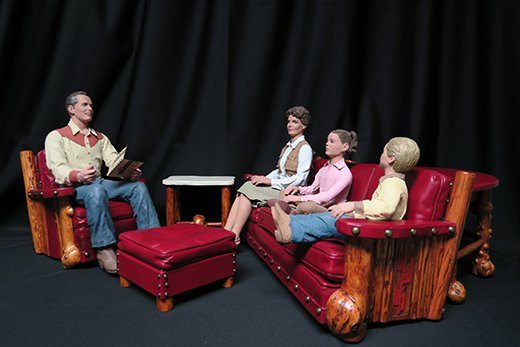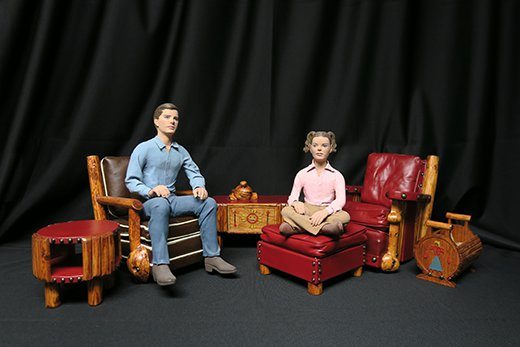Born in Kansas in 1890, Thomas Molesworth was raised in South Dakota and Montana, inspiring a love affair with the West from an early age. In 1908, he began studies at the Art Institute of Chicago. Though enrolled as a painter, the Institute was a major force in the study and design of decorative arts, now responding to the influence of the Arts and Crafts movement. Moleworth’s style combines the simple, high-quality workmanship and materials of Arts and Crafts construction with everyday design characteristics of Western American ranches and farms.

Molesworth’s path to creating a distinctly Western style of design began in 1931 when he moved his wife and family to Cody, Wyoming. He soon opened the Shoshone Furniture Company, initially displaying work from various furniture manufacturers before evolving into a manufacturing company to produce Molesworth’s own designs.
Early commissions reveal somewhat primitive designs: roughly outlined thunderbirds painted in red, leather trim, fringe, and what would become known as Molesworth’s trademark large brass tacks. These early pieces made significant use of Native American and wildlife imagery, such as tepee and buffalo designs painted in contrasting colors inlaid into leather tabletops. The work by other furniture makers in and around Billings, Montana, provided Molesworth the chance to study the varying materials and styles of pole furniture and design, soon to become a pivotal element of his characteristically Western style.

In 1933, Thomas Molesworth’s company and career took a major turn upwards when he was commissioned by Moses Annenberg to create the furnishings for the western retreat near Beulah, Wyoming known as Ranch A. Furnishing a large lodge with eight bedrooms and four guest cabins was no small task for a fledgling furniture store, and Molesworth rose to the occasion. Creating 245 pieces of furniture, as well as lighting fixtures and accessories, Molesworth was likely involved in the manufacture of the horsehide, beaded drapes, Native American artifacts and Navajo textiles to set off his designs. Here, Molesworth introduces bold primary colors to dispel the darkness of the interior; the skill of his upholsterers stands the test of time– many of the chairs and couches remain in good condition some seventy years later.